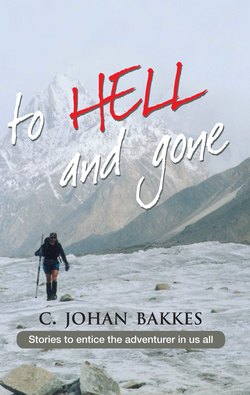Читать книгу To hell and gone - C. Johan Bakkes - Страница 17
На сайте Литреса книга снята с продажи.
ОглавлениеBeautiful
I noticed her while I was in the process of taking a photo. From somewhere outside the lens. And I was instantly ice-cold and dismayed by the accusation in her eye. Hurriedly I took the photo and disappeared into the crowd.
Guiltily I hastened through the throng in the market place of Londuimbali. The place was teeming. I pushed into an alley, shouldered an old man out of my way and nearly stumbled over a small child. When I looked up, I saw her again, looking at me from a distance . . . I pushed to the left, into the next alley, taking no notice of the brightly stacked, fresh vegetables and fruit, or the newly baked loaves, steaming in a dish. I was moving more slowly now, with lowered head. When I looked up again, there she was, gazing at me . . .
A market in Africa draws me like a magnet. The maze of streets and stalls enthralls me. I can soak up the colours, smells and bustle of sellers, wares and buyers for hours. Superficially all markets look the same, but if you scratch more deeply, each tells the story of its country, its village, its people, its suffering, its good, its evil and its pleasures.
Markets? I’ll never forget the brassiere stalls of Kalomo in Zambia. White, red, purple, pink and blue ones, new ones, old ones and four-times-used ones. My German clients were afraid. They found the crowds, the filth and the squalor repulsive.
At the market in Karogo in the north of the Ivory Coast, I stared open-mouthed at the livestock enclosure. Flanked by weavers and coppersmiths, you could buy a sheep or goat, dead or alive, depending on how you wanted it packaged. I recall with horror how I witnessed a suspected pickpocket being stoned to death by traders. It was anything but a pretty sight.
In the labyrinth that is the medina at Fes, past the souks selling beautiful leather and copper wares, carpets and perfume, I also found the hashish dens and saw the underbelly of Morocco, surrounded by rats and human excrement . . .
This second trip through Angola was a retracing of history for me. Unlike my previous visit eight months before, when I had gone back on the trail of the Dorsland trekkers, I was retracing my own footsteps this time. I had returned to feel the desctruction of this former African jewel. My comrades and I had been part of it, had helped to destroy it. We had known places like Ongiva, Xangongo, Cuvelai and Calai; we had helped shoot them to pieces. It hadn’t stopped there, unfortunately, for when we had left, the Angolans had carried on destroying one another.
As our journey progressed, I became more and more depressed. Roads were in poor shape, buildings were crumbling, people were defeated. Young men were conspicuous in their absence, I noticed. But what could one expect after a war that had lasted for 25 years?
I disregarded the beautiful scenery and focused instead on the blown-up vehicles and bullet-riddled tanks at the roadside. The incredible coastline, palm tree oases and deltas passed by unnoticed. I was on the lookout for landmines. Corrupt bureaucrats and policemen caused me to ignore the friendly, smiling population. Large-scale economic collapse and decline made me blind to the efforts of those who were trying to piece their lives together again.
Now I was looking for something beautiful to photograph, a colourful image of a beautiful woman in traditional dress, I thought, as I stopped at the market place of Londuimbali. I grabbed my camera.
It was market day and everyone was there. I was enthralled by the atmosphere. I strolled around – not unnoticed, because very few visitors ever stop there. I studied the women surreptitiously. Each carried a child on the hip, even young girls of about fourteen. A new nation was being built.
A beautiful girl caught my eye. Exquisite in patterned yellow, with a bright orange headscarf. She had beautiful eyes.
“May I take your picture?” I asked and knew she didn’t understand. I pointed at the camera.
“Fotografia?” I tried in Portuguese. She smiled coyly and I took the photograph.
“Obrigada.”
Another beautiful woman captured my lens. Shyly she peered around a corner.
Another one, and suddenly I had an entire entourage.
They’re getting more and more beautiful, I thought, and selected only the prettiest.
I stopped a tall, elegant woman – she radiated a defiant nobility. High cheekbones, long, dangling earrings, smouldering. It was as I was about to take the photograph . . . from the corner of my eye I saw her standing at a distance. The stark disfigurement shocked me. Half her face was missing. There was only one eye, and she was looking at me, and the eye was saying: “What about me? I know you don’t find me beautiful, so you won’t take my picture.”
I left.
It became a nightmare, for wherever I turned, she loomed in front of me. I hurried back to the car – I couldn’t bear any more ugliness. I unlocked the door. There was a hand on my shoulder. I swung round and looked into the hollow eye of ruin.
Then she turned her unscathed side towards me and the person standing in front of me smiled and handed me a bunch of frangipani.
I did not take her photograph. That kind of beauty cannot be captured on film.
